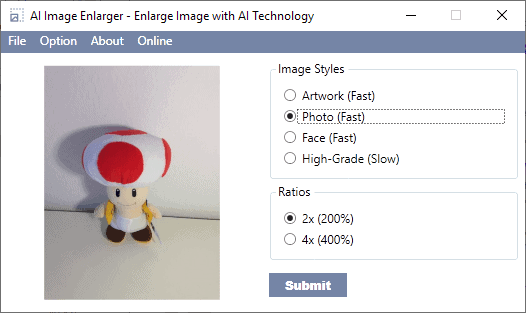

Select Resample and choose an interpolation method.Ħ. If your image has layers with styles applied to them, select Scale Styles under the gear icon to scale the effects. The new file size for the image appears at the top of the Image Size dialog box, with the old file size in parentheses.ĥ. Get started with these steps.ģ. To maintain the current ratio of Width to Height, be sure the chain icon linking these properties is activated.Ĥ. Under Dimensions, enter values for Width and Height. This allows you to adjust the print size and resolution independently, which changes the number of pixels in the image. If you have specific needs for the dimensions or size of your image - like a poster at a certain print size - check the Resample box. You could try upsampling to add pixels to the photo, but it might take some work to get the picture looking good enough to use.Ĭhange resolution by adjusting pixel dimensions. Normally, cropping a small section of a photo and increasing its size would lead to major pixelation - not exactly the look your friend is going for. Say you snapped a great photo of your friend in a group portrait, and your friend wants to turn it into their new headshot. With Super Resolution in Photoshop and Lightroom, you can dramatically increase image resolution while keeping image quality in good shape. That’s where artificial intelligence (AI) and machine learning (ML) come in handy. Upsampling is trickier, however, since Photoshop has to guess how newly added pixels should look.Ĭhances are that you won’t want to play the guessing game with photo resolution, especially for images you want to print. Sometimes photographers will downsample images to save storage space or make load times faster for online images. When you increase the number of pixels in an image without adjusting the dimensions, you are adding more pixels into the same amount of space and increasing the resolution (or amount of detail) held within each inch. Increasing the number of pixels is called upsampling, which adds data to the image. When you add or subtract pixels from an image in Photoshop or Lightroom, that’s called resampling.ĭecreasing the number of pixels is called downsampling, which removes data from your image. The more pixels an image starts with, the higher the resolution. For aspiring detectives and photographers alike, features like Super Resolution can quadruple the size of your photos using AI, giving you the clean edges and detail you need to make the most of any shot.Įvery digital image has a certain number of pixels.
#Image resolution enlarger movie#
It may not be movie magic, but it’s pretty close. You could increase the resolution of a digital image file, but you’d lose image quality by doing so.īut today, Adobe Photoshop and Adobe Photoshop Lightroom have features that can help you increase resolution while upholding visual quality. It used to be that the only way to resize a smaller photo into a larger, high-resolution image without highlighting poor image quality was to take a new photograph or re-scan your image at a higher resolution. Does this work? Not the way Hollywood does it. It’s a familiar scene: A detective asks someone to “enhance” a blurry image on a computer until it becomes clear enough to make out a key piece of evidence. Can you enhance the quality of a low-resolution image?


 0 kommentar(er)
0 kommentar(er)
